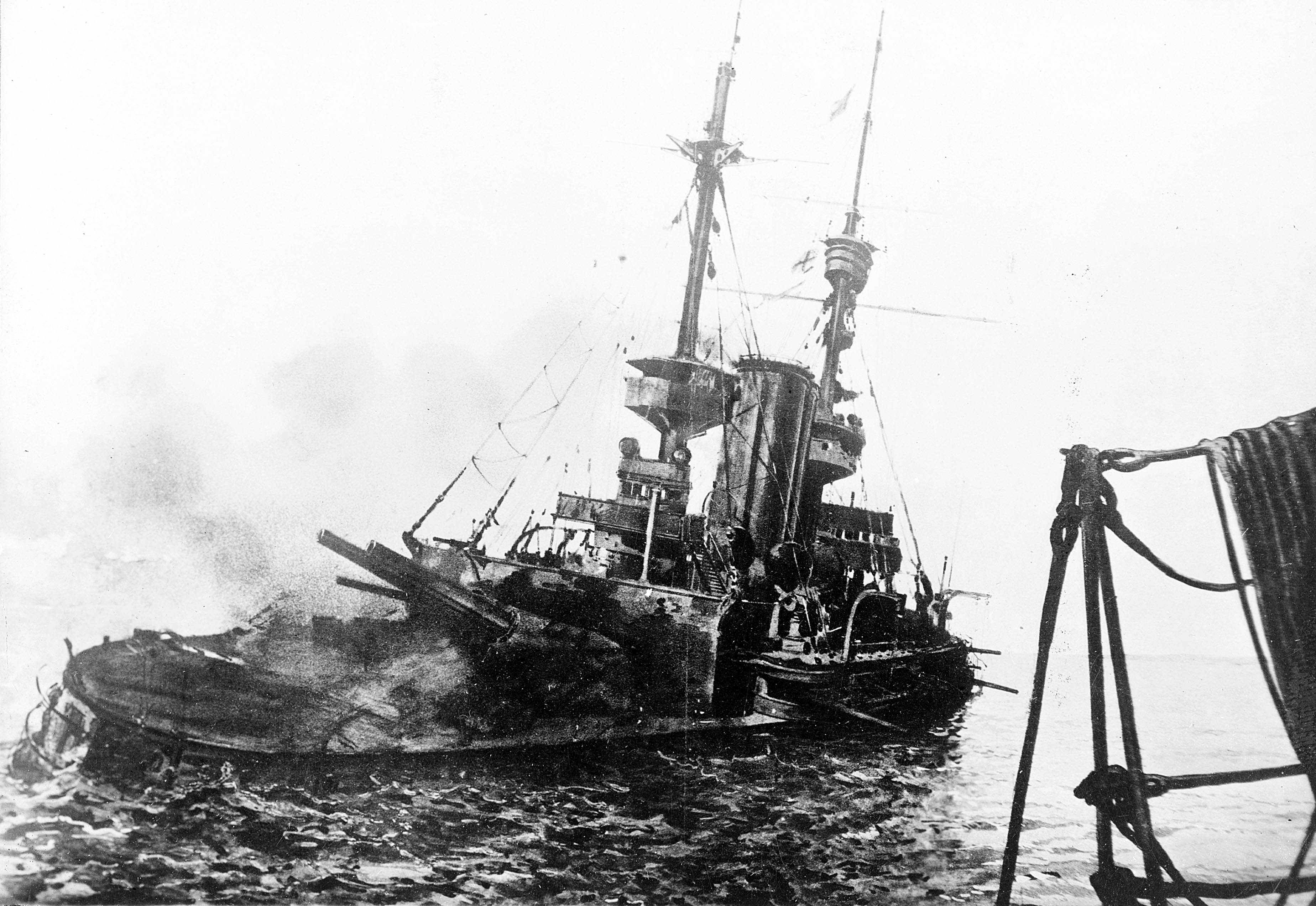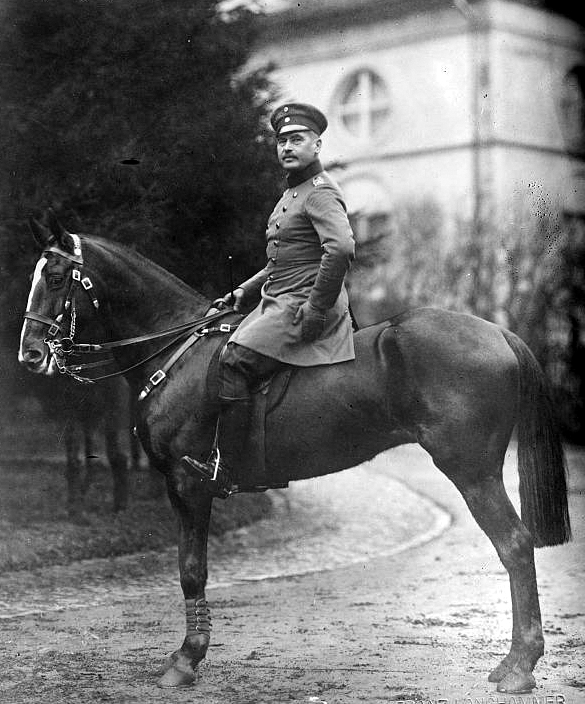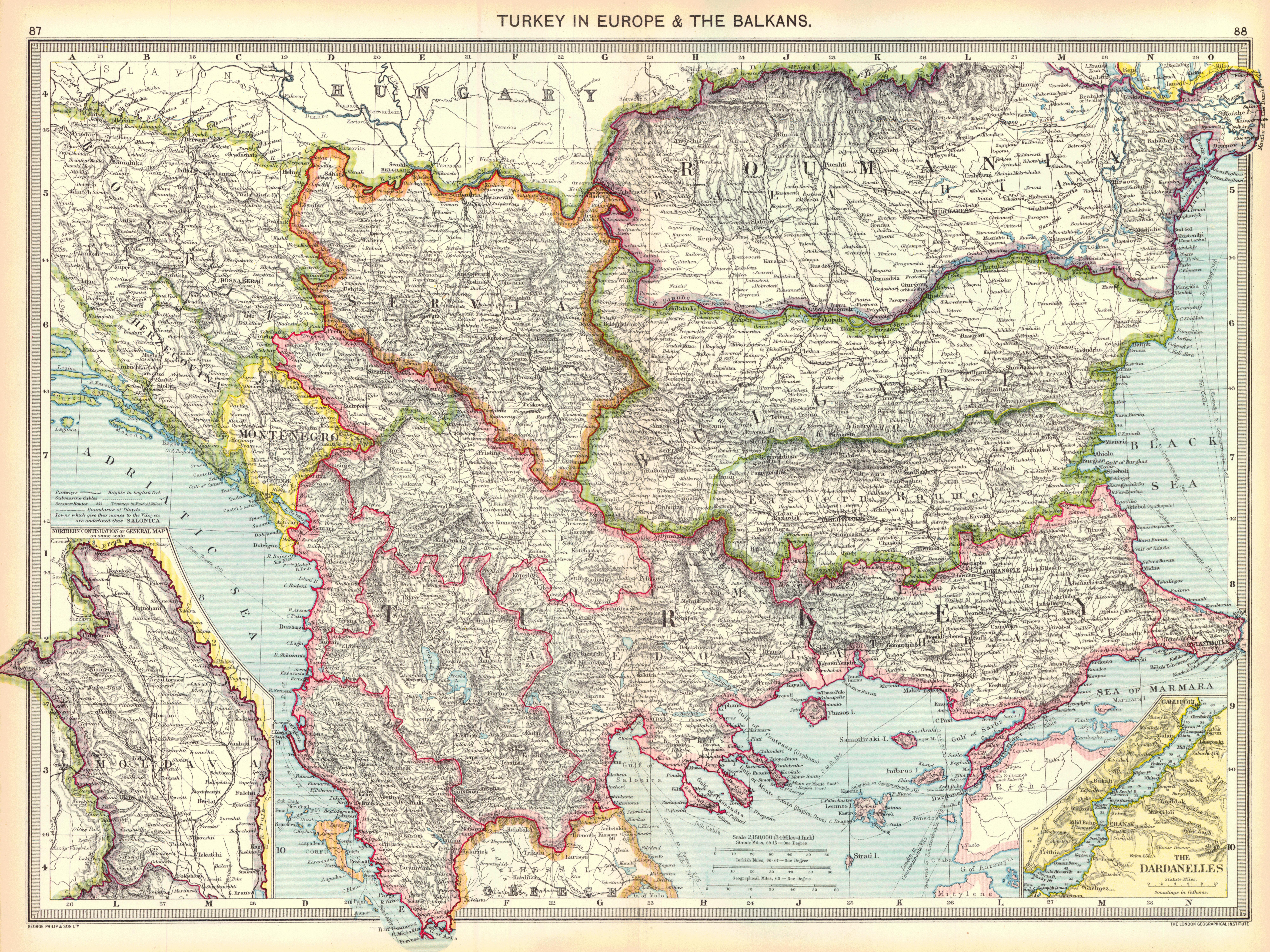|
Landing At Cape Helles
The landing at Cape Helles ( tr, Seddülbahir Çıkarması) was part of the Gallipoli Campaign the amphibious landings on the Gallipoli peninsula by British and French forces on 25 April 1915 during the First World War. Helles, at the foot of the peninsula, was the main landing area. With gunfire support from the Royal Navy, the 29th Division was to advance along the peninsula on the first day and seize the heights of Achi Baba. The British then planned to capture the forts that guarded the straits of the Dardanelles. A feigned landing at Bulair, by the Royal Naval Division and a real landing at Anzac Cove were made to the north at Gaba Tepe, by the Australian and New Zealand Army Corps, before dawn; a diversionary landing was made by French forces at Kum Kale on the Asiatic shore of the Straits. After dark, another demonstration was made by the French in Besika Bay. The Helles landing was mismanaged by the British commander, Major General Aylmer Hunter-Weston. V and W ... [...More Info...] [...Related Items...] OR: [Wikipedia] [Google] [Baidu] |
Sedd-el-Bahr
Sedd el Bahr ( tr, Seddülbahir, ota, سد البحر, meaning "Walls of the Sea") is a village in the district of Eceabat, Çanakkale Province, Turkey. It is located at Cape Helles on the Gallipoli peninsula in Turkey. The village lies east of the cape, on the shore of the Dardanelles. It was the site of V Beach, the landing zone for two Irish battalions, including one from the SS ''River Clyde'', on 25 April 1915 during the Gallipoli Campaign in World War I. At the tip of the Sedd el Bahr promontory is the castle (''Sedd el Bahr Kale''), also known as Old Castle (''Eski Kale''), which was built in 1659. The British designated the castle "Fort No. 3" (at the other end of V Beach was "Fort No. 1", also known as Fort Ertuğrul) and it was equipped with ten artillery pieces, including two 28 cm Krupp L/22 guns. The castle was bombarded by the Royal Navy on 3 November 1914, causing serious damage and killing 86 Ottoman soldiers. The British attacked the Ottoman forts on ... [...More Info...] [...Related Items...] OR: [Wikipedia] [Google] [Baidu] |
Landing At Anzac Cove
The landing at Anzac Cove on Sunday, 25 April 1915, also known as the landing at Gaba Tepe and, to the Turks, as the Arıburnu Battle, was part of the amphibious invasion of the Gallipoli Peninsula by the forces of the British Empire, which began the land phase of the Gallipoli Campaign of the First World War. The assault troops, mostly from the Australian and New Zealand Army Corps (ANZAC), landed at night on the western (Aegean Sea) side of the peninsula. They were put ashore north of their intended landing beach. In the darkness, the assault formations became mixed up, but the troops gradually made their way inland, under increasing opposition from the Ottoman Turkish defenders. Not long after coming ashore, the ANZAC plans were discarded, and the companies and battalions were thrown into battle piecemeal and received mixed orders. Some advanced to their designated objectives, while others were diverted to other areas and ordered to dig in along defensive ridge lines. ... [...More Info...] [...Related Items...] OR: [Wikipedia] [Google] [Baidu] |
July Crisis
The July Crisis was a series of interrelated diplomatic and military escalations among the major powers of Europe in the summer of 1914, Causes of World War I, which led to the outbreak of World War I (1914–1918). The crisis began on 28 June 1914, when Gavrilo Princip, a Bosnian Serb, Assassination of Archduke Franz Ferdinand, assassinated Archduke Franz Ferdinand, heir presumptive to the Austro-Hungarian throne, and his wife Sophie, Duchess of Hohenberg. The assassin team was armed, trained, smuggled across the border and instructed by the head of the Serbian military intelligence service and his staff. A complex web of alliances, coupled with miscalculations when many leaders regarded war as in their best interests or felt that a general war would not occur, resulted in a general outbreak of hostilities among most major European nations in early August 1914. Austria-Hungary viewed the irredentist movements of South Slavs, as promoted by Kingdom of Serbia, Serbia, as a threat ... [...More Info...] [...Related Items...] OR: [Wikipedia] [Google] [Baidu] |
Otto Liman Von Sanders
Otto Viktor Karl Liman von Sanders (; 17 February 1855 – 22 August 1929) was an Imperial German Army general who served as a military adviser to the Ottoman Army during the First World War. In 1918 he commanded an Ottoman army during the Sinai and Palestine Campaign. On the whole Sanders provided only limited help to the Ottoman forces. Early life and career Otto Liman was born in Stolp (now Słupsk, Poland) in the Province of Pomerania in the Kingdom of Prussia. He was the son of Carl Leonhard Liman and his wife Emma née Michaelis. Carl Liman was a prosperous businessman, who purchased the lordship of the manor (Rittergut) of Schwessin (now Świeszyno, Poland). Although divergent details of Carl Liman's paternal ancestry are recorded, it is generally agreed that his father and Otto's grandfather was born to a Jewish family by the name of Liepmann and was later baptised a Christian. After gaining his diploma (Abitur) at the Friedrich Wilhelm Gymnasium in Berlin, Otto Lima ... [...More Info...] [...Related Items...] OR: [Wikipedia] [Google] [Baidu] |
Enver Pasha
İsmail Enver, better known as Enver Pasha ( ota, اسماعیل انور پاشا; tr, İsmail Enver Paşa; 22 November 1881 – 4 August 1922) was an Ottoman military officer, revolutionary, and convicted war criminal who formed one-third of the dictatorial triumvirate known as the "Three Pashas" (along with Talaat Pasha and Cemal Pasha) in the Ottoman Empire. Enver was a member of the Committee of Union and Progress (CUP), a Young Turk organization that agitated against Abdul Hamid II's absolute rule. He was a leader of the 1908 Young Turk Revolution which reestablished the Constitution and parliamentary democracy in the Ottoman Empire, and along with Ahmed Niyazi was hailed as "hero of the revolution". However multiple crises in the Empire including the 31 March Incident, the Balkan Wars, and the power struggle with the Freedom and Accord Party made Enver and the Unionists disillusioned of political pluralism. After the 1913 Ottoman coup d’état that brought t ... [...More Info...] [...Related Items...] OR: [Wikipedia] [Google] [Baidu] |
Second Balkan War
The Second Balkan War was a conflict which broke out when Bulgaria, dissatisfied with its share of the spoils of the First Balkan War, attacked its former allies, Serbia and Greece, on 16 ( O.S.) / 29 (N.S.) June 1913. Serbian and Greek armies repulsed the Bulgarian offensive and counter-attacked, entering Bulgaria. With Bulgaria also having previously engaged in territorial disputes with Romania and the bulk of Bulgarian forces engaged in the south, the prospect of an easy victory incited Romanian intervention against Bulgaria. The Ottoman Empire also took advantage of the situation to regain some lost territories from the previous war. When Romanian troops approached the capital Sofia, Bulgaria asked for an armistice, resulting in the Treaty of Bucharest, in which Bulgaria had to cede portions of its First Balkan War gains to Serbia, Greece and Romania. In the Treaty of Constantinople, it lost Adrianople to the Ottomans. The political developments and military preparations f ... [...More Info...] [...Related Items...] OR: [Wikipedia] [Google] [Baidu] |
First Balkan War
The First Balkan War ( sr, Први балкански рат, ''Prvi balkanski rat''; bg, Балканска война; el, Αʹ Βαλκανικός πόλεμος; tr, Birinci Balkan Savaşı) lasted from October 1912 to May 1913 and involved actions of the Balkan League (the Kingdoms of Kingdom of Bulgaria, Bulgaria, Kingdom of Serbia, Serbia, Kingdom of Greece, Greece and Kingdom of Montenegro, Montenegro) against the Ottoman Empire. The Balkan states' combined armies overcame the initially numerically inferior (significantly superior by the end of the conflict) and strategically disadvantaged Ottoman armies, achieving rapid success. The war was a comprehensive and unmitigated disaster for the Ottomans, who lost 83% of their European territories and 69% of their European population. [...More Info...] [...Related Items...] OR: [Wikipedia] [Google] [Baidu] |
Mehmed V
Mehmed V Reşâd ( ota, محمد خامس, Meḥmed-i ḫâmis; tr, V. Mehmed or ; 2 November 1844 – 3 July 1918) reigned as the 35th and penultimate Ottoman Sultan (). He was the son of Sultan Abdulmejid I. He succeeded his half-brother Abdul Hamid II after the 31 March Incident. He was succeeded by his half-brother Mehmed VI. His nine-year reign was marked by the cession of the Empire's North African territories and the Dodecanese Islands, including Rhodes, in the Italo-Turkish War, the traumatic loss of almost all of the Empire's European territories west of Constantinople (now Istanbul) in the First Balkan War, and the entry of the Ottoman Empire into World War I in 1914, which would ultimately lead to the Empire's end. Early life Mehmed V was born on 2 November 1844 at the Çırağan Palace, Istanbul.''The Encyclopædia Britannica'', Vol.7, edited Hugh Chisholm, (1911), 3; "''Constantinople, the capital of the Turkish Empire..''". His father was Sultan Abdulmejid I ... [...More Info...] [...Related Items...] OR: [Wikipedia] [Google] [Baidu] |
Sick Man Of Europe
"Sick man of Europe" is a label given to a nation which is located in some part of Europe and experiencing a time of economic difficulty or impoverishment. Emperor Nicholas I of the Russian Empire is considered to be the first to use the term "Sick Man" to describe the Ottoman Empire in the mid-19th century. The characterization existed during the " Eastern Question" in diplomatic history, which also referred to the decline of the Ottoman Empire in terms of the balance of power in Europe. After the dissolution of the Ottoman Empire in the early 20th century, the term has been applied to other nations. In modern usage, the term has faced criticism due to its origins and arguable over-usage. Origin Early usage Russian Tsar Nicholas I (), seeking to expand into parts of the Ottoman Empire during the Eastern Question, had described Turkey as "sick" or "sick man" during his meeting with Austrian Prince Metternich () in Münchengrätz, two months after the Treaty of Hünkâr � ... [...More Info...] [...Related Items...] OR: [Wikipedia] [Google] [Baidu] |
Major General
Major general (abbreviated MG, maj. gen. and similar) is a military rank used in many countries. It is derived from the older rank of sergeant major general. The disappearance of the "sergeant" in the title explains the apparent confusion of a lieutenant general outranking a major general, whereas a major outranks a lieutenant. In the Commonwealth of Nations, Commonwealth and in the United States, when appointed to a field command, a major general is typically in command of a Division (military), division consisting of around 6,000 to 25,000 troops (several regiments or brigades). It is a two-star general, two-star rank that is subordinate to the rank of lieutenant general and senior to the rank of brigadier or brigadier general. In the Commonwealth, major general is equivalent to the navy rank of rear admiral. In air forces with a separate rank structure (Commonwealth), major general is equivalent to air vice-marshal. In some countries including much of Eastern Europe, major ... [...More Info...] [...Related Items...] OR: [Wikipedia] [Google] [Baidu] |
Beşik Bay, Çanakkale
Beşik Bay (, or ) is a small bay on the Aegean shore of Troy, at the mouth of the Hellespont in present-day Asiatic Turkey. It has been written of since antiquity and throughout the 19th century, and in the 20th was seen as a strategic prize. It played a critical role in the Crimean War, and in the disastrous Gallipoli campaign of World War I World War I (28 July 1914 11 November 1918), often abbreviated as WWI, was one of the deadliest global conflicts in history. Belligerents included much of Europe, the Russian Empire, the United States, and the Ottoman Empire, with fightin .... Bays of Turkey Landforms of Çanakkale Province {{Çanakkale-geo-stub ... [...More Info...] [...Related Items...] OR: [Wikipedia] [Google] [Baidu] |





